Missouri is rich in wildlife, both fauna and flora. Some of the species living there are endemic to the area! Because freshwater habitats are so prevalent in the state, many species that thrive there are aquatic or semi-aquatic. However, not all are “happy” with their homes, as they’re sensitive to the changes caused by urbanization, pollution, climate change, invasive species, and diseases.
Today we’ll discuss seven animal species in Missouri listed as endangered or critically endangered. Please keep reading to discover what threatens their population!
1. Eastern Small-Footed Bat
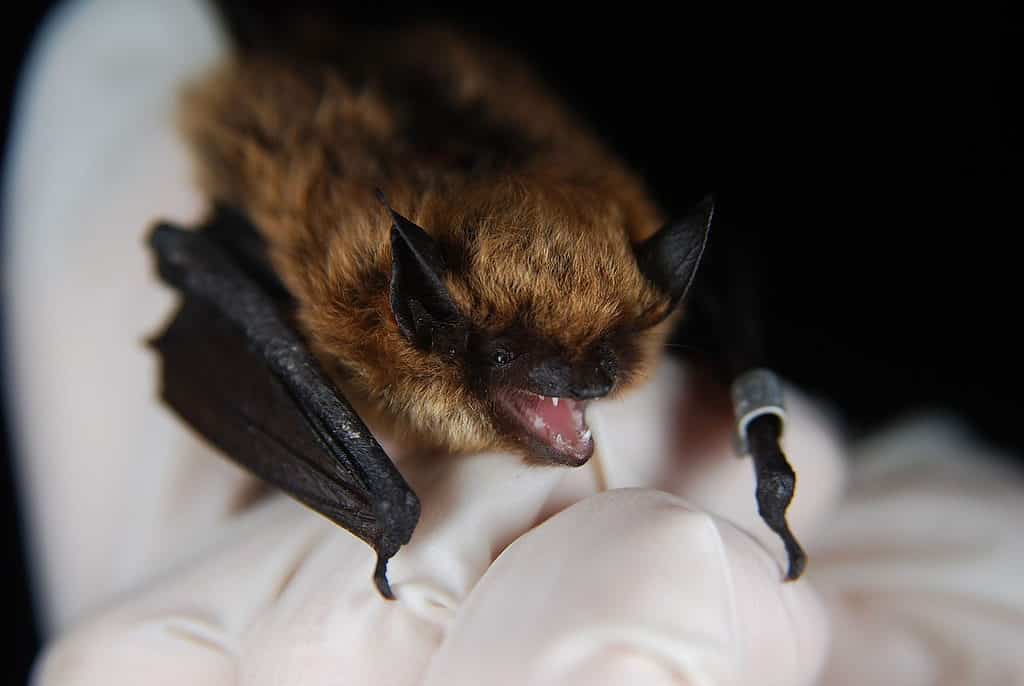
The eastern small-footed bat is a Missouri resident on the brink of extinction.
©Paul Moosman / CC BY-SA 4.0, via Wikimedia Commons – Original / License
The eastern small-footed bat is a Missouri resident on the brink of extinction. It’s among eastern North America’s smallest bat species. These bats measure 2.5 to 3.7 inches long, have a wingspan of 8.3 to 9.8 inches, and weigh around 0.1 to 0.28 ounces.
They were listed as endangered in 2018 based on a possible 70% reduction in their geographic range. Although biologists believe their population isn’t constantly declining, eastern small-footed bats are at great risk of getting white-nose syndrome. This species is believed to be affected the most by the disease, and estimations indicate a 96% population decline. Some populations are already suffering from this syndrome.
Furthermore, because these bats spend so much of their time hibernating in caves, cave closure or collapse impacts their population.
2. Sheepnose
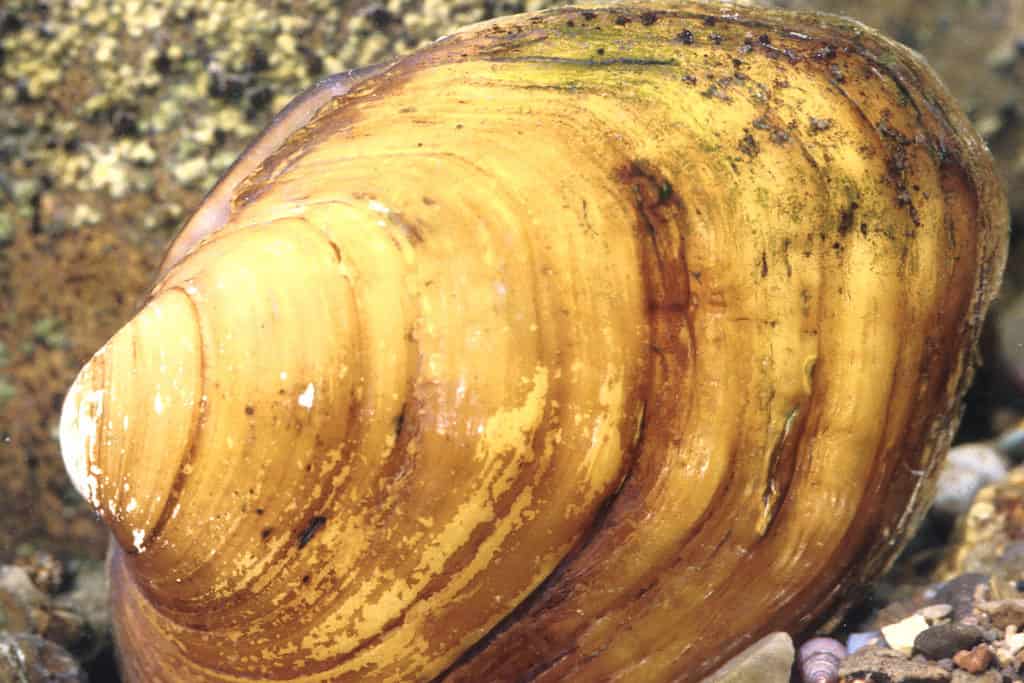
The sheepnose mussel is a freshwater mussel found only in some U.S. states, where it lives in rivers and reservoirs.
©Dick Biggins, U.S. Fish and Wildlife Service, Public domain, via Wikimedia Commons – Original / License
The sheepnose mussel is scientifically called Plethobasus cyphyus. It’s a freshwater mussel found only in some U.S. states, where it lives in rivers and reservoirs. The mussel was listed as endangered in 2013 because of a severe decline in their geographic range. This decline is primarily caused by habitat degradation due to pollution, channelization, mining, impoundments, and sediments. Their population is believed to have registered a 50% reduction, and only 2,500 – 100,000 individuals are now left in U.S. waters.
Besides habitat destruction, sheepnose mussels are threatened by some invasive species like the Asiatic clam, the black carp, and the zebra mussel. However, the threat they pose isn’t nearly as serious as the ones caused by human action – impoundments being the biggest.
3. Blanding’s Turtle
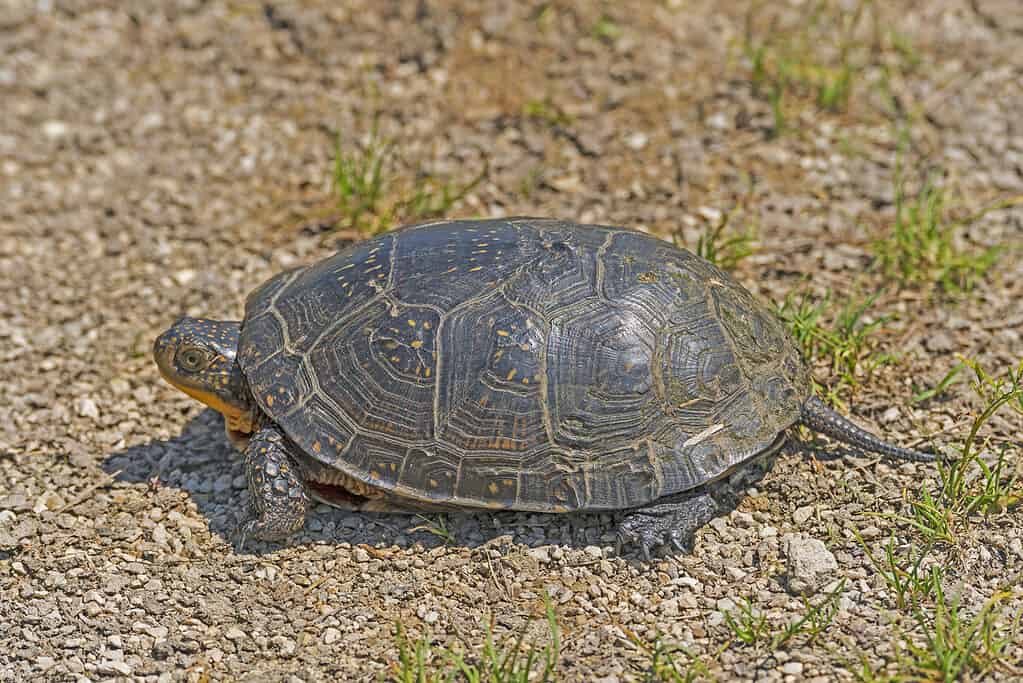
The Blanding’s turtle is scientifically called Emydoidea blandingii.
©iStock.com/Wildnerdpix
The Blanding’s turtle is native to the central and eastern United States and Canada. It’s scientifically called Emydoidea blandingii and is part of the Emydidae family. These turtles have a carapace length of around 7.1 to 9.1 inches, although rare specimens may reach 10 inches. The carapace is domed, slightly flattened on the midline, and has many yellow speckles on its dark background. The chin and throat are bright yellow, while the plastron is yellow with dark blotches. Blanding’s turtles have dark heads and legs. In short, they are a pretty unique turtle, so it’s a pity the species is endangered!
Their populations are small and constantly declining. The largest population is located in Nebraska, with around 130,000 adult individuals. The smallest populations are in Pennsylvania, where only a few dozen turtles are left.
The main threats to Blanding’s turtle include collection for trade and increased road mortality caused by the constant development and expansion of rural road networks. Besides these, habitat degradation, destruction, and fragmentation are major threats.
4. Pallid Sturgeon
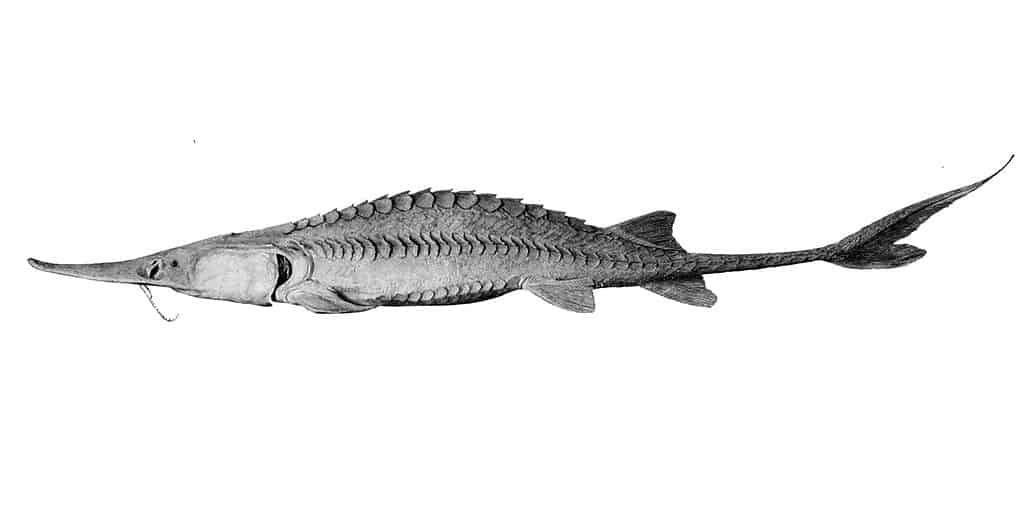
The pallid sturgeon measure 30 to 60 inches long and weigh approximately 85 pounds.
©AnonymousUnknown author, Public domain, via Wikimedia Commons – Original / License
The pallid sturgeon is a ray-finned fish found only in the lower Mississippi and Missouri river basins. These fish measure 30 to 60 inches long and weigh approximately 85 pounds. They have a distinctive body that’s often called ugly or even dinosaur-like!
These fish were assessed as critically endangered in 2020, although their “relationship” with the IUCN Red List didn’t start then. These fish were first assessed as endangered in 1986 and kept this status until 2020. Only 11,700 mature individuals are left today. The subpopulation in the Lower Missouri River is primarily affected by habitat degradation and anthropogenic modification. The water surface was reduced by half, the habitat diversity decreased, and the current velocity doubled.
The situation in the Upper Missouri River is slightly different, as the pallid sturgeons inhabiting the area are mainly threatened by dams that cause habitat fragmentation and alter ecological processes. The Mississippi River subpopulation, however, is impacted by bank stabilization, channelization, dredging, floodways, and spillways, which lead to serious consequences like the reduction in river width and length, among others.
5. Ozark Pyrg
The Marstonia ozarkensis is commonly called the Ozark pyrg. It’s a freshwater snail found only in the Ozark Plateau, in northern Arkansas and southern Missouri. It was listed as critically endangered in 2012. It’s believed to be threatened by sedimentation from livestock, gravel dredging, and nutrient loading. However, scientists from the Missouri Department of Conservation checked the North Fork Watershed’s water quality, and, despite the factors mentioned above, the water was found to be relatively good. Therefore, there’s still no confirmation of the cause of the Ozark pyrg population decline.
6. Ottoe Skipper
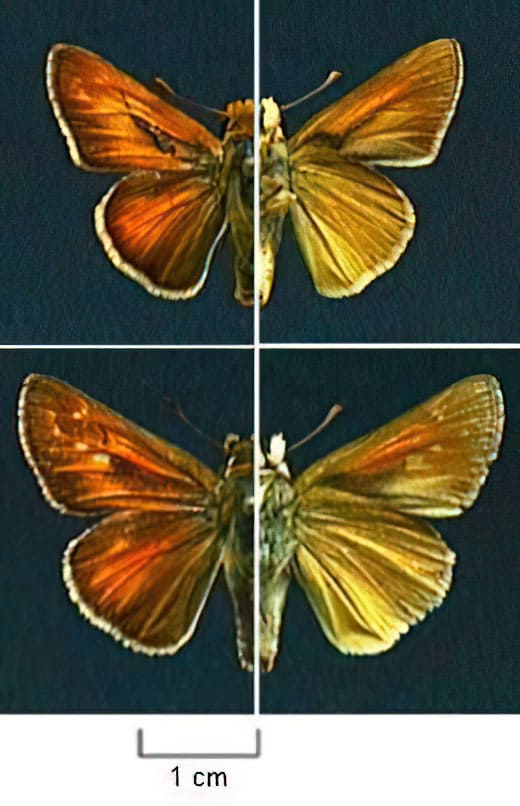
The Ottoe skipper a butterfly found only in the United States, including Missouri.
©Northern Prairie Wildlife Research Center – USGS, Public domain, via Wikimedia Commons – Original / License
The Ottoe skipper is scientifically called Hesperia ottoe. It’s a butterfly found only in the United States, including Missouri. The insect has a wingspan of 1.14 to 1.37 inches and has orange-yellowish wing coloration. These butterflies feed on Poaceae species of flowering plants, little bluestem plants, and purple coneflower flowers.
This species was first classified as endangered in 2021, and its population is still declining. Their population size is unknown, but it’s believed to be severely fragmented. It might seem that since these butterflies are on the IUCN Red List for the first time, there’s a high chance to help their population through conservation measures. Unfortunately, some biologists believe that their population started declining a long time ago – since the arrival of European settlers. But the decline wasn’t very noticeable until recent times.
Their original habitat is believed to have almost disappeared over the last few centuries because the land was converted for agriculture. And the territories that still exist are also threatened by habitat degradation caused by pesticide use, urban development, or invasion by non-native plants.
7. Snuffbox
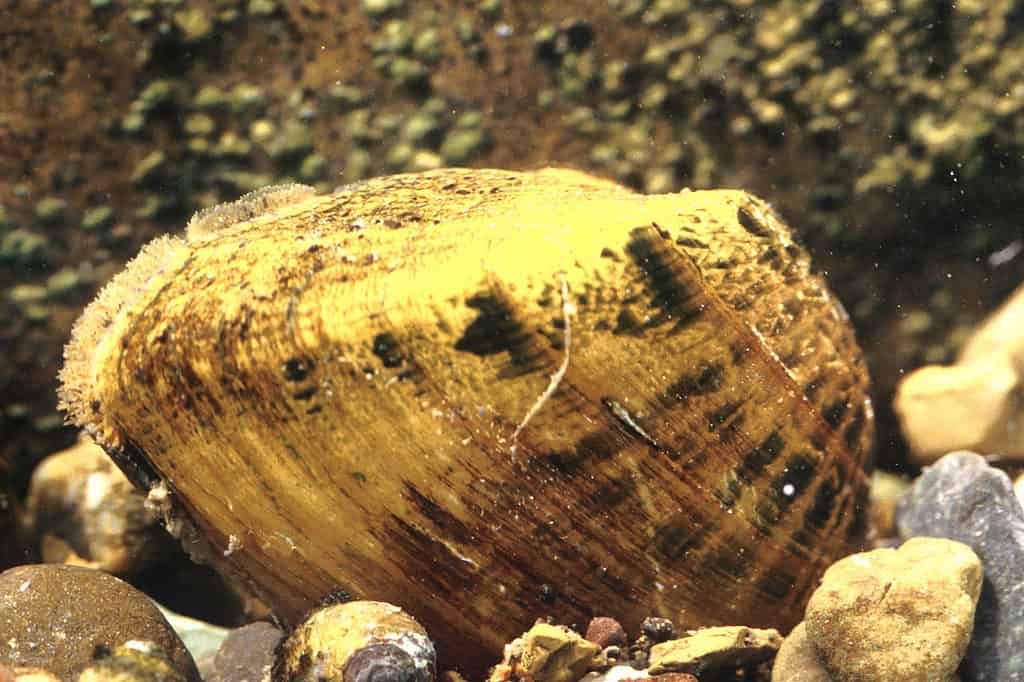
A major threat to the snuffbox habitat is siltation, a form of water pollution by terrestrial clastic material dominated by clay or silt.
©Dick Biggins, U.S. Fish and Wildlife Service, Public domain, via Wikimedia Commons – Original / License
The snuffbox is yet another freshwater mussel on the brink of extinction. It is currently found only in 31 to 79 locations in Canada and the United States, Missouri included.
The IUCN Red List first listed them as vulnerable in 1983. The last assessment was made in 2015, and the species was listed as endangered. Their historical range suffered a 62% decline, and the extant mussels live in intensive farming regions. Therefore, they are primarily threatened by habitat perturbation and pollution caused by pesticides, livestock manures, and fertilizers. Another major threat to the snuffbox habitat is siltation, a form of water pollution by terrestrial clastic material dominated by clay or silt.
Up Next:
Thank you for reading! Have some feedback for us? Contact the AZ Animals editorial team.








